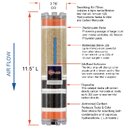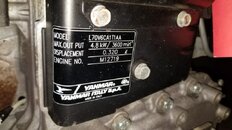Thanks. I actually just pulled the trigger yesterday and ordered a bunch of fittings from August. Whips, PMV, check valve, valves....I hope I got everything.
I got enough stuff to have gauges everywhere but also to remove / cap them fairly easy.
I might remove the belt and try starting just the engine next week and hopefully cleaning it up some. Grease is on the way.
the rix needs 5 hp or better to run so a 220 1ph motor is easy to find. Just have to make sure foot print is right and the pully size on the motor is right to get the correct compressor speed. I can help a lot with getting theat set up also. Just make sure you get the right pully form rix for the shaft size to make sure the belt has the same groove on both pulleys. To make it easy get a motor that has the same shaft size as the engine or get an adaptor to make the shaft bigger. That is what I did when I changed motors. the engine shaft size was IE 3/4 and the motor had a 1/2 shaft. got an adaptor to go from 1/2 to 3/4 and it ran great. If your compressor does not have a foot print for the motor you will have to make a rig to make it work. Its not a simple drill and bolt down. Ill send pics of mine also in desired. mt contraption allows the engine to be moved laterally to allign belts and longitudaly to tighten belts and to rotate the motor a few degrees to allign pullys to parrallel.






